As a Product Design Leader at R1 RCM and other enterprise companies, I've focused on building design systems, mentoring Jr designers, Sr designers, design managers, and creating scalable, intuitive user experiences that solve complex business problems.
As a Product Design Leader serving at R1 RCM, I operated as a strategic design leader and a hands-on mentor, driving innovation, collaboration, and impactful design outcomes across multidisciplinary teams. My role extended beyond individual contributions to mentoring junior and senior designers, as well as design managers, ensuring they exceled in communication, collaboration, and strategic design efforts. By fostering a culture of outcome-driven design thinking and leveraging modern tools like AI, I helped elevate the organization’s design maturity and delivered meaningful results.
My approach combines rigorous methodology with practical flexibility and extreme empathy. I introduced structured frameworks that allow designers to contribute more effectively to product strategy while integrating AI tools that enhance and support designers' work. This dual focus on process improvement and technological advancement has elevated R1's entire design organization's capabilities, allowing them to tackle increasingly complex challenges with greater confidence and clarity.
The results speak volumes: faster development cycles, stronger collaboration, more cohesive user experiences, and a team that consistently delivers solutions that balance user needs with business objectives. Perhaps most importantly, we shifted from a reactive design culture to one that proactively shapes product direction.
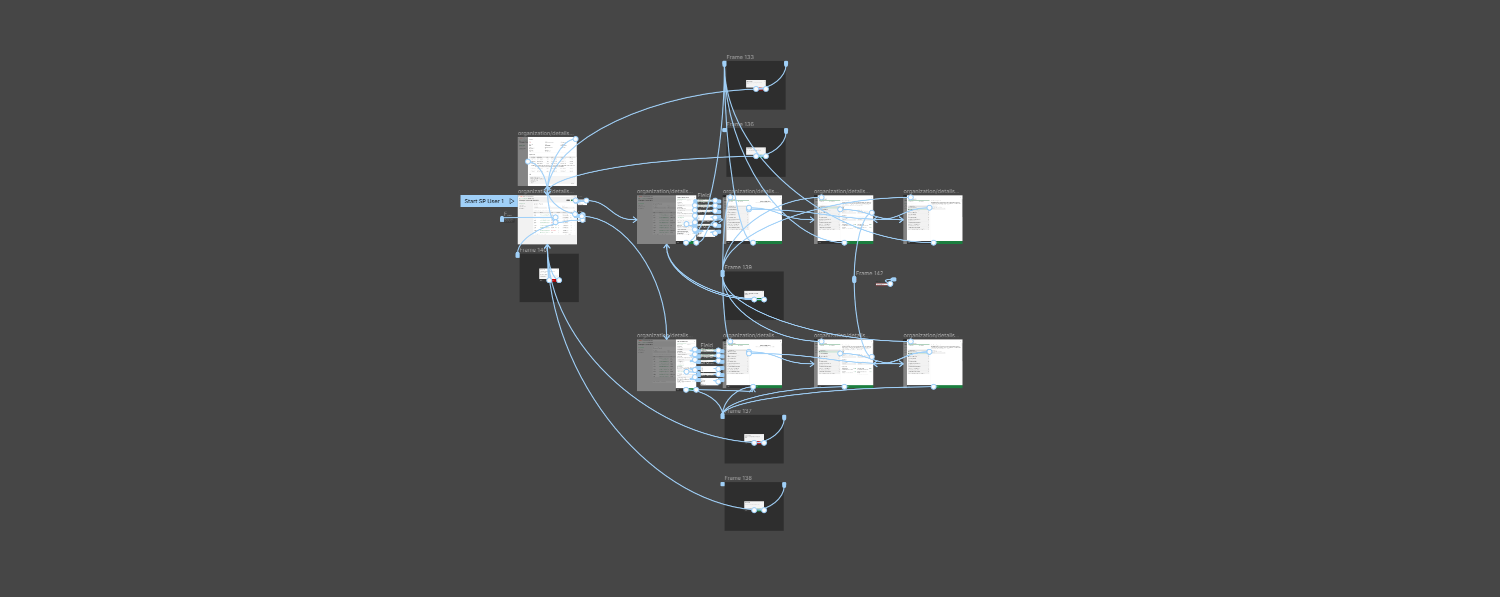
I was the Lead User Experience Designer responsible for all designs that are part of Multi-Cloud Management Platform - Service Provider edition. That includes IC contribution as well as leading, synchronizing and overseeing all Service Design work done by UX Designers at Kyndryl.
● Our target audience was larger companies that needed to manage their own multi-cloud tenants and customers.
● Discovery research and user interviews were not available to us. I led the effort with our UX Researcher to work through that challenge and make research an integral part of all stages of design.
● The design system was temporary, we rebuilt it to align with Kyndryl, as well as fix accessibility issues. I led this effort in collaboration with our UX Researcher.
● Initially the workflow was mostly siloed, with an extreme lack of communication across disciplines. I worked within the organization to build a culture of constant communication and collaboration between UX, Product and Dev.
● My responsibilities covered discovery research, stakeholder interviews, user interviews, data synthesis, workshop facilitation, UX design, comps, wires, prototypes, and accessibility evangelizing. I also worked to mentor UX Designers, managed multiple designers working within Service Provider, and lead the effort to update and move our design system from Sketch to Figma.
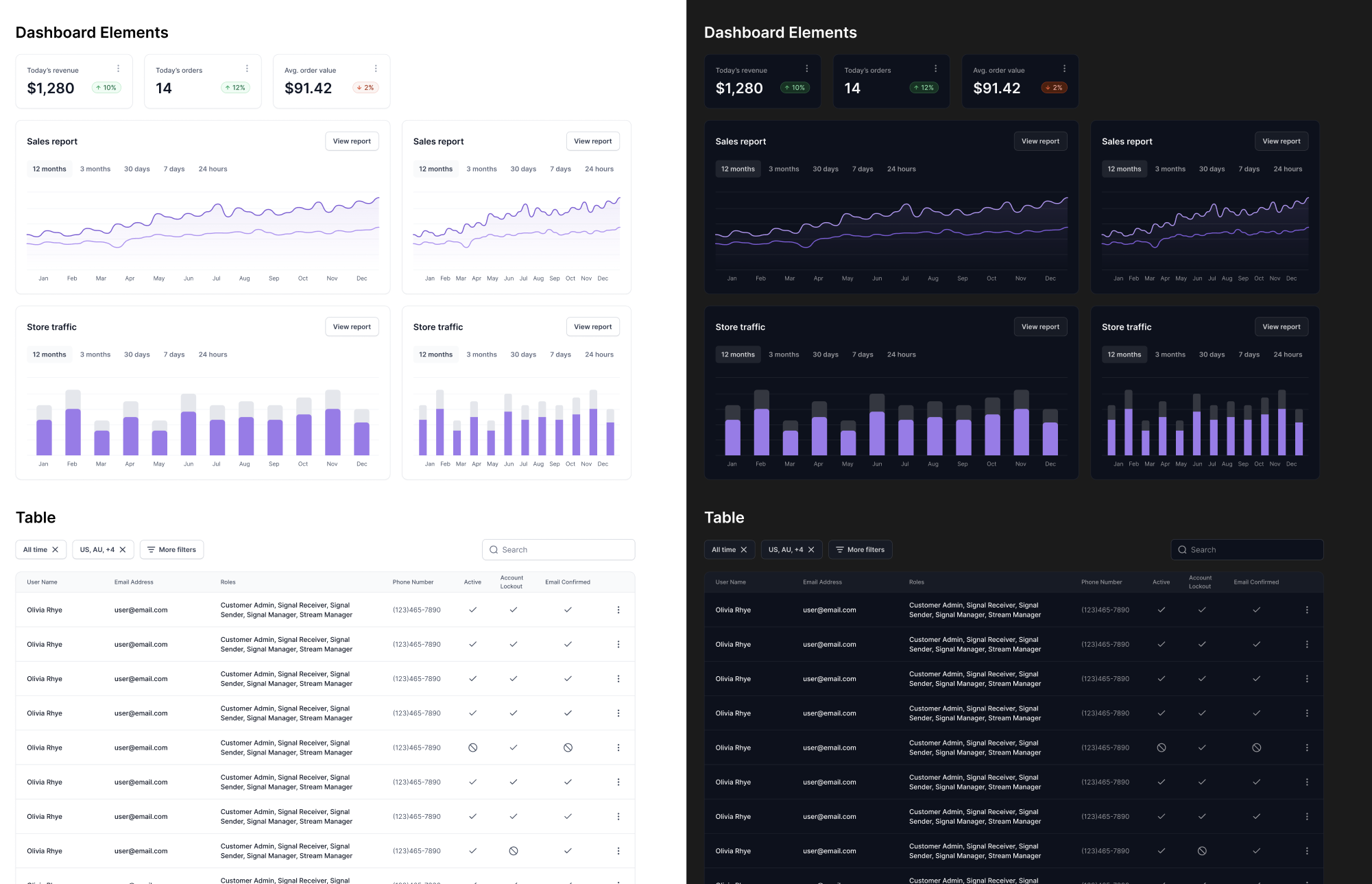
As Principal Product Designer at Improving Agility, I architected and maintained a comprehensive design system for an undisclosed enterprise product, significantly improving design consistency and development velocity.

I was the Sr. Product Designer responsible for multiple products including an app for scheduling surgeries called Case Tracker. I evolved and improved a shifting design library while learning a new, complex industry. My focus was to build a culture of user-centered design, and strong collaboration between different disciplines, while delivering critical and impactful designs.
● Our target audience was nurses and staff in doctor's offices and hospitals under the Ascension umbrella.
● My responsibilities covered discovery research, stakeholder interviews, user interviews, data synthesis, workshop facilitation, UX design, comps, wires, prototypes, and accessibility evangelizing.
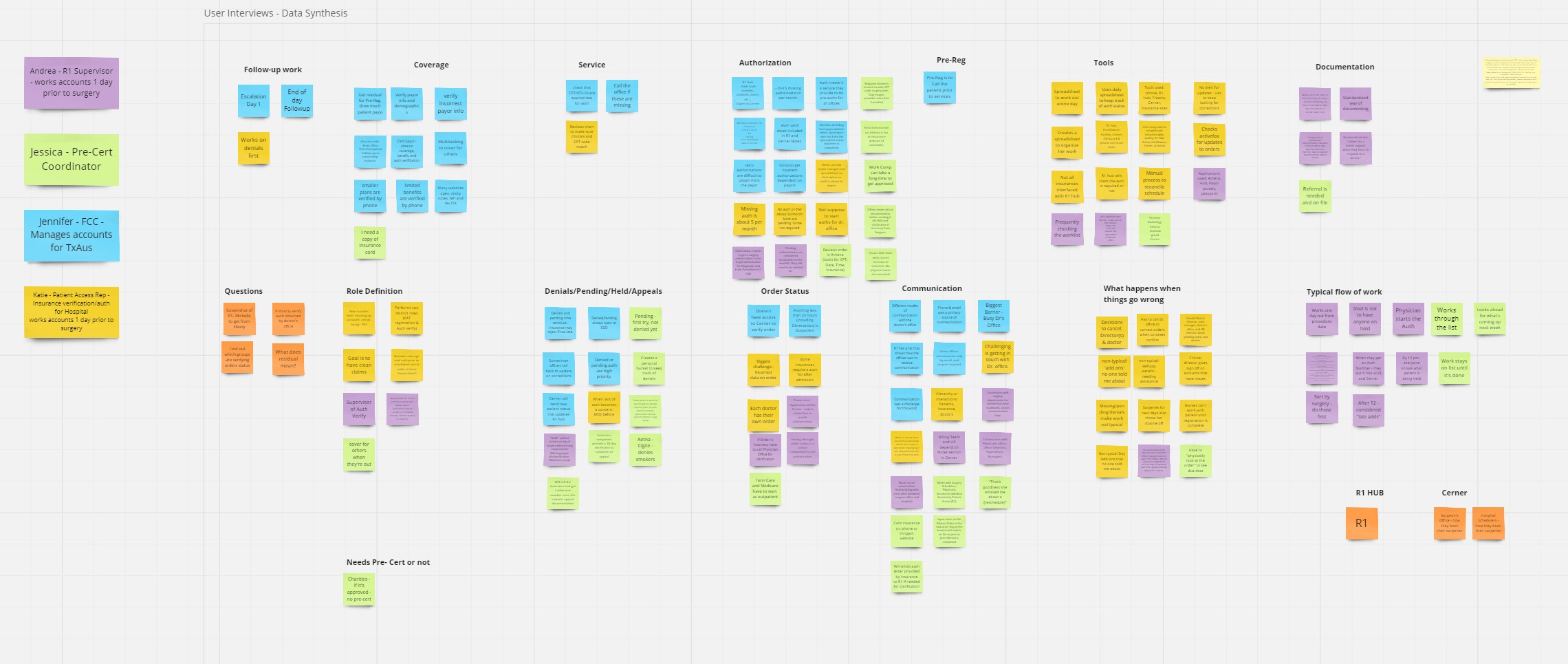
Before the pandemic, I would visit doctor's offices and hospitals within the Ascension family. I shadowed nurses and staff in their work environment, observed everything they did, and asked why things were done a certain way. I learned their workflow, problems and workarounds. After the pandemic, all user interviews and data synthesis were done virtually. Discovery research, feedback on designs in progress, and feedback on the alpha version of Case Tracker we're regularly done every 2 to 3 sprints.
● In all cases, I included our clinical informaticists, product team, stakeholders, and development team in various user interviews and data synthesis. This led to buy-in from all those who participated, and an understanding of why and how designs changed over different iterations.
● When designing new workflows for Case Tracker, I led multiple workshops with a diverse team from within Ascension. These included a surgeon, product lead, development lead, business analyst, and clinical informaticists to develop a service blueprint. These workshops were informed our discussion guide used during user interviews to inform discovery research before beginning designs.
● I moderated our user interviews and facilitated all data synthesis sessions with the rest of the team.

● I was the Sr. Product Designer responsible for the Testing Validation aspect of the ERP (Enterprise Resource Planning) Self Onboarding product.
● Our target audience was both internal Dell stakeholders and Dell GIA's (Global Integration Architects), as well as Dell's largest customers that use ERP systems to purchase Dell products.
● This was a new product that exceeded the functionality of even our largest competitors.
● Our team was working in an agile and lean method, while still collaborating and synchronizing with a second waterfall team on what was essentially two parts of a single product.
● My responsibilities covered research, stakeholder interviews, user interviews, workshop facilitation, UX design, comps, wires, prototypes, as well as general housekeeping and owning all miscellaneous issues and escalations.

Based on the interviews we conducted, we discovered that our largest pain point was the excessive, and inefficient time it took to test and troubleshoot integrations before they were allowed to go live.
● Our customers are Dell's largest, and for the majority of our time working on this project, we weren't allowed to speak to them or show them our designs before actual production.
● My workaround for the lack of access to our customers was to "cold call" people on LinkedIn, managers from Pivotal, and technicians from companies that made the software used for our customers' ERP integrations. I found people with similar responsibilities to our users, and conducted user interviews with them. This gave us data to base our designs on.
● I moderated our user interviews, and facilitated data synthesis sessions with the rest of the team.
I encouraged, included and to drove discussions within our team, as well as within the larger collaboration between both teams working on B2B Self Onboarding. Product owners, product managers and developers worked on card sorting, "How Might We's" and even sketched out initial ideas exploring different solutions for our designs.
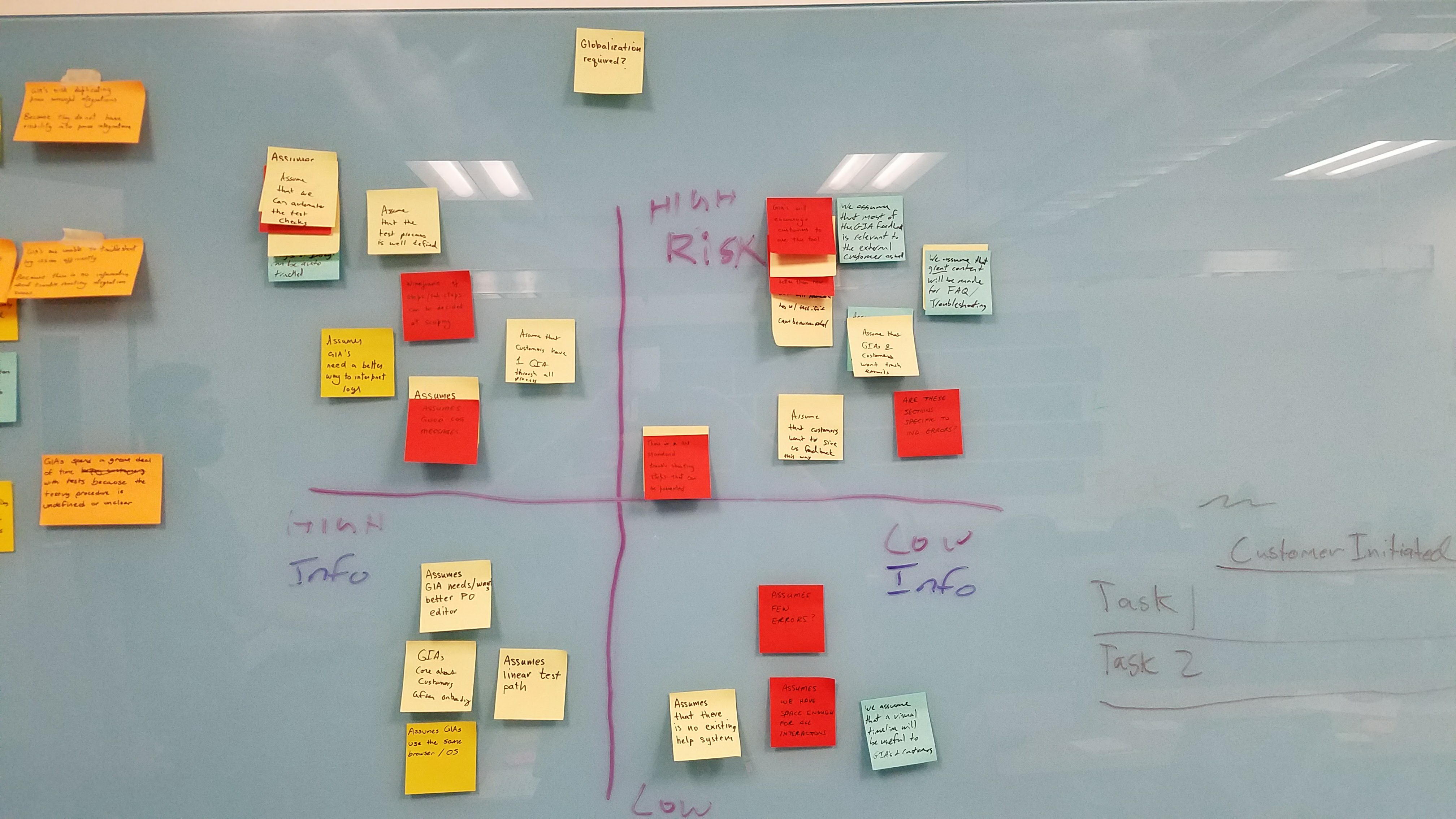
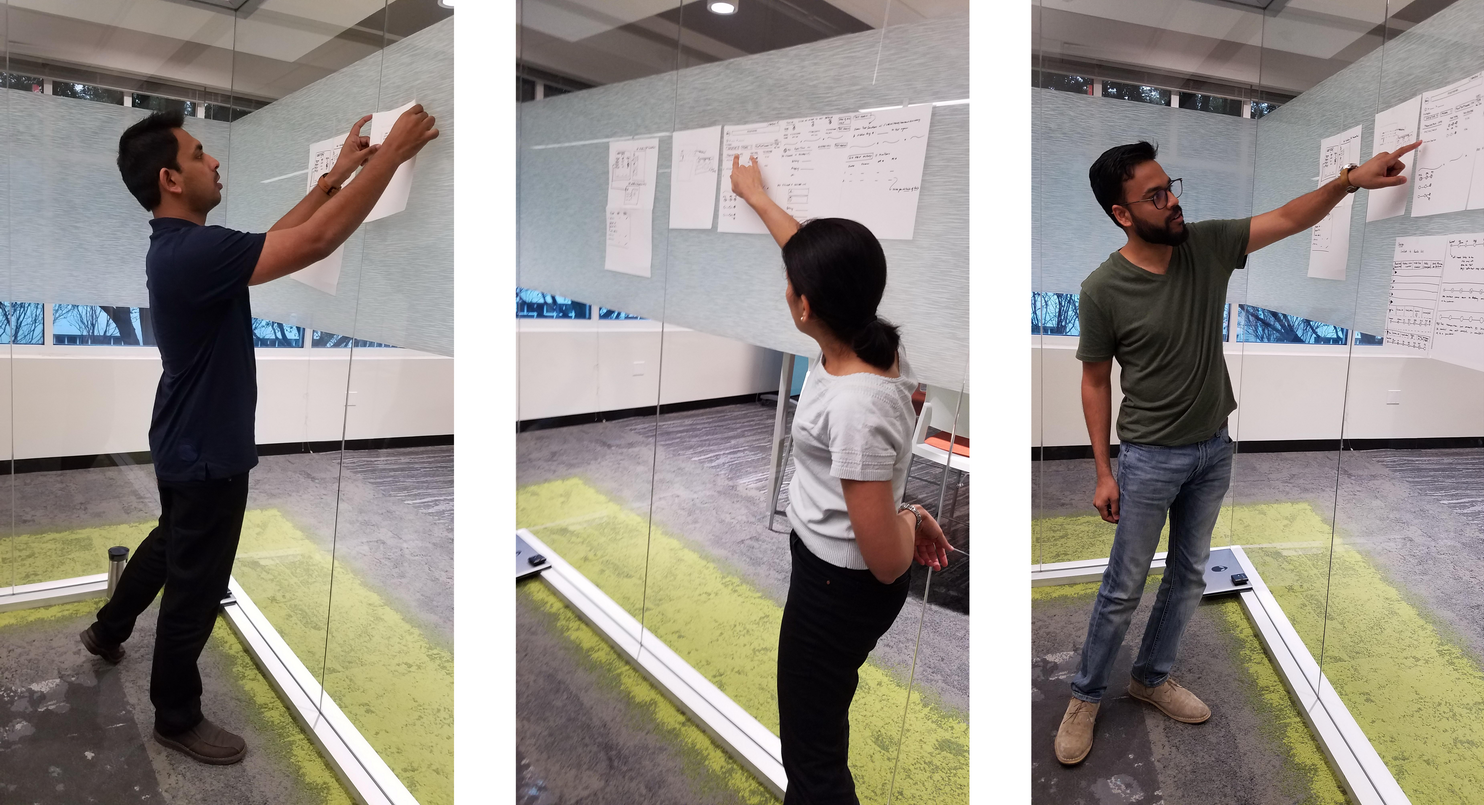
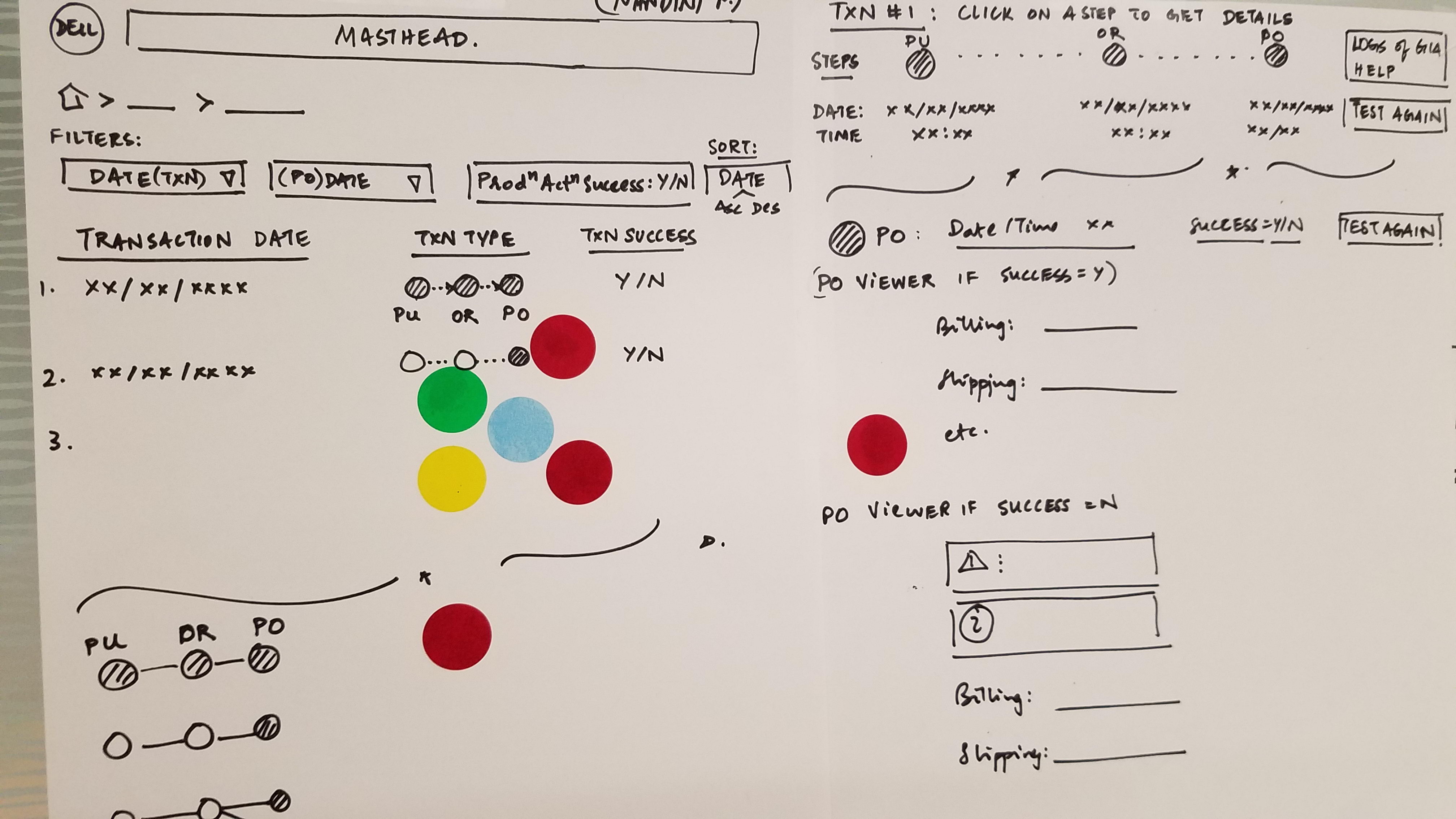
My responsibility at this stage was to encourage and guide our discussion - the rest of the team came up with these sketches. We voted on the designs, or parts of the design, we felt was the best approach to use. I took these ideas and conducted comparative research and based my work on a combination of all of these bits and pieces of information.
At the beginning of my design process I created wireframes for testing purposes.
● Rather than design the whole product, I repeatedly ran small user interviews on small aspects of the design.
● Static comps were made, and I got quick validation, or invalidation, of these ideas early, and changed our design strategy accordingly.
● I used UserTesting.com to run these interviews.
For the second interface of our work - the Testing Validation History interface - I designed using high-fidelity prototypes in Webflow. We went through nine iterations literally within a couple of weeks.
● As there were no special components needed for this, prototyping was actually a faster way to build and iterate as opposed to static comps in Figma or Photoshop.
● Quick iteration and quick user interviews helped us learn and get to the most optimal solution in a short amount of time.
Mentored junior and senior designers, as well as design managers, helping them excel in communication, collaboration, and strategic design efforts.
Elevated the organization's design maturity by implementing structured design processes and fostering a culture of outcome-driven design thinking.
Pioneered the integration of modern tools like AI into our design workflow, creating new possibilities for efficiency and creative problem-solving.
"Nasser has been an amazing mentor and advocate during my time at R1. He brings a level of experience that one would expect from a team lead or manager. Nasser is quick to identify team misalignment and works to resolve them using tried-and-true methods. If you are looking for a senior product designer or lead to manage a team of designers, I would look no further than Nasser."— Sydney Hembree, Product Designer, R1 RCM
"Nasser did a great job of leading UX-centric conversations and finding new ways to engage his team to find the best solutions possible for any problem that was thrown his way. As Destiny 2's UI Visual Design Lead, I was always so happy to see him involving the visual designers from the earliest stages of his projects, advocating for their ideas when it made sense, and the great levels of humility and expertise he brought with him to conversations around a feature's visual design. I'll miss having him around very much, and hope we get to work together again the future."— Alex Griendling, UI Staff Visual Designer, Bungie
"Nasser and I worked together on a number of projects during our time at Dell, and I learned a lot from him. He was always considerate of the needs of our users first and foremost, and encouraged everyone to do the same. He was an early participant in piloting Dell’s agile squad collaboration methods, and helped other designers learn to work in squads too. Any team is lucky to have Nasser!"— Alexis Rose, Staff Product Designer, Reverb (Etsy)
"Working with Nasser has been amazing! His profound knowledge in user experience design and his unwavering commitment to advocating for users make him an invaluable asset to any team. Nasser's ability to delve deeply into problems, dissect them into manageable pieces, and consistently find innovative solutions is truly impressive. He approaches each challenge with a genuine passion and a collaborative spirit, making him a pleasure to work with. Moreover, his willingness to offer assistance and share his expertise demonstrates his dedication to both personal and professional growth. I highly recommend Nasser for any project or organization seeking a skilled and passionate user experience advocate!"— Esther Choi, Sr Product Designer, R1 RCM
Interested in collaborating or want to discuss a potential project? I'm currently available for select opportunities.
Get In Touch